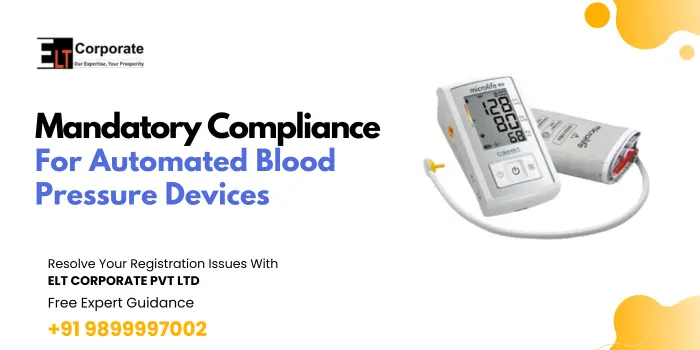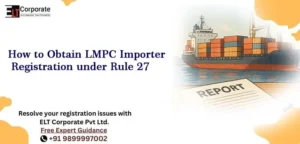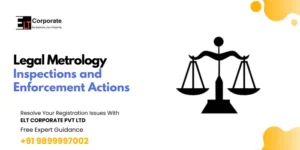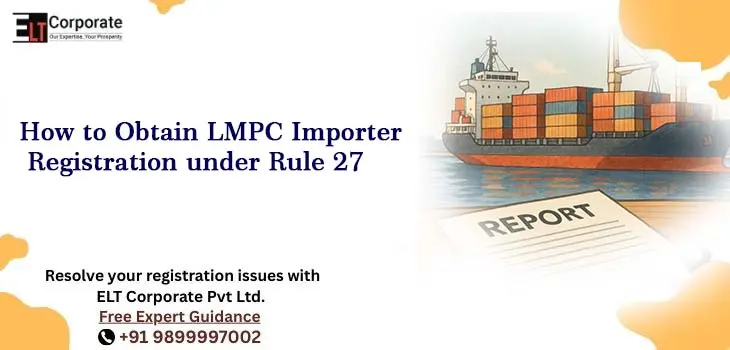Mandatory compliance for automated blood pressure devices means following the legal rules, standards and approval steps required by Indian regulators before these devices can be manufactured, imported, sold or used in healthcare. Automated blood pressure devices (digital sphygmomanometers and ambulatory/continuous BP monitors) are regulated because they directly affect diagnosis and treatment of hypertension — wrong readings can harm patients. The rules cover classification, registration/approval, quality systems, testing and labeling.
What Does Mandatory Compliance For Automated Blood Pressure Devices Mean In India?
Mandatory compliance requires that an automated blood pressure device meet the Medical Devices Rules, 2017 (MDR 2017) and any CDSCO notifications that apply, and that the manufacturer or importer obtains the required license/registration, follows required quality management systems, performs required testing/validation (accuracy, electrical safety), and labels the product per rules. In short: you must prove the device is safe, accurate and manufactured under an acceptable quality system before placing it on the Indian market.
Why Is Mandatory Compliance Important For Automated Blood Pressure Devices?
- Patient safety: BP readings guide treatment — inaccurate devices can cause wrong therapy.
- Regulatory certainty: Compliance prevents seizures, fines or bans and speeds market access.
- Credibility and market acceptance: Hospitals, clinics and buyers prefer devices with regulatory approval and recognized validation.
- International trade: Meeting Indian and international standards helps with exports.
Because blood pressure monitors are used clinically, India made registration and compliance mandatory to protect patients and ensure device reliability.
How Are Automated Blood Pressure Devices Classified Under The Medical Device Rules, 2017?
India uses a risk-based classification (Class A–D). Automated blood pressure monitoring devices are listed as Class B (low to moderate risk) under CDSCO’s notified list. This classification determines what regulatory pathway, inspections and documentation are required. Class B devices typically need site audit, quality system evidence and device-specific technical documents before license/registration.
Which Authority Regulates The Mandatory Compliance For Automated Blood Pressure Devices In India?
The Central Drugs Standard Control Organisation (CDSCO) under the Ministry of Health & Family Welfare is the national authority for medical devices in India. CDSCO publishes classification lists, guidance documents, standards to follow, and manages the online portal (SUGAM) for registration/permits. State drug controllers handle local manufacturing licenses as applicable.
What Certifications And Approvals Are Required For Automated Blood Pressure Devices?
Typical required certifications/approvals include:
- CDSCO registration/license: For Class B devices, the manufacturer/importer must register or obtain the required import/manufacturing license via CDSCO (SUGAM portal) as per the applicable notifications.
- Quality Management System: Evidence of QMS—ISO 13485 is strongly expected/used as proof of an effective QMS and is aligned with Fifth Schedule requirements of MDR 2017.
- Performance/accuracy validation: Clinical validation according to recognised standards (see next item).
- Electrical safety & EMC: Conformity to applicable IEC/ISO standards for medical electrical equipment (e.g., IEC 60601 family / particular standard for BP monitors ISO/IEC specific parts).
- Lab testing certificates: Tests from accredited / CDSCO-recognised Medical Device Testing Laboratories where required.
Note: exact forms and approvals differ for manufacturers vs importers (Forms MD-3/MD-5 for manufacture; MD-14/MD-15 for import, etc. — see CDSCO guidance).
What Documents Are Needed To Obtain Compliance For Automated Blood Pressure Devices?
Typical documentation package (detailed and device-specific) includes:
Administrative / identity documents
- Import Export Code (IEC) / company registration documents.
- Manufacturer’s authorization (for imports).
- Application forms on SUGAM (e.g., MD-14/MD-15 etc. depending on application).
Technical documents
- Device description, specifications, intended use and instructions for use (IFU).
- Design dossier (drawings, BOM, software description for embedded firmware).
- Risk management file (ISO 14971 style).
- Clinical / performance validation reports demonstrating accuracy (see ISO 81060-2 / AAMI/ESH/ISO protocols).
Standards and testing evidence
- Electrical safety reports (IEC 60601 series where applicable).
- EMC test reports.
- Biocompatibility (if any patient-contact materials).
Quality system and manufacturing
- ISO 13485 certificate or QMS evidence per Fifth Schedule (if required).
- Site master file / manufacturing process descriptions.
- Batch release and traceability records.
Others
- Label and packaging samples complying with CDSCO labeling guidance.
- Certificate of free sale / market standing (if exported or imported).
- Test lab accreditation and reports (from CDSCO-recognized MDTLs).
(Always consult the specific CDSCO guidance document for the complete list for your application type.)
What Labeling And Packaging Rules Apply To Automated Blood Pressure Devices?
Labels must be accurate and contain required information: device name, intended use, manufacturer name & address, batch/serial number, manufacturing date, expiry date (if applicable), warnings and precautions, instructions for use, importer information (for imports), and any registration / license numbers if required by CDSCO. Packaging must protect device integrity and may need tamper-evident features. CDSCO’s labelling guidance and MDR 2017 rules set minimum content and language requirements; follow those plus any importing-country specific labeling rules.
How Does Cdsco Ensure Safety And Quality Of Automated Blood Pressure Devices?
CDSCO enforces safety and quality through:
- Notification & classification (making BP monitors a notified device and placing it under Class B).
- Registration / licensing requirements and technical review of submitted dossiers.
- Inspection / audit of manufacturing sites (especially for Class B+ higher classes).
- Recognizing and using accredited testing laboratories for device evaluation.
- Post-market surveillance and recall authority if devices are found unsafe.
- These controls create multiple checks (pre-market and post-market) to protect patients.
What Are The Import Requirements For Automated Blood Pressure Devices In India?
If importing:
- Import license (Form MD-15/MD-14) via CDSCO is required for notified devices (BP monitors are notified). Submit technical dossier, manufacturer’s authorization, test reports, and QMS evidence.
- Customs clearance requires IEC, shipping documents and, where applicable, sanitary/standards certificates.
- Local authorized agent must be appointed for foreign manufacturers; the agent handles filings and post-market obligations.
- Labeling in local language / inclusion of importer details is required.
What Penalties Exist For Non-Compliance Of Automated Blood Pressure Devices?
Non-compliance penalties under MDR 2017 and Drugs & Cosmetics Act may include:
- Seizure of non-conforming devices.
- Fines and legal action against the manufacturer/importer.
- Suspension or cancellation of manufacturing/import license or registration.
- Recall and public warning if device causes harm.
Penalties vary based on severity; repeated or harmful violations draw heavier action. Always follow CDSCO guidance to avoid enforcement.
How Does Mandatory Compliance For Automated Blood Pressure Devices Support Patient Safety?
By ensuring devices:
- Meet validated accuracy standards (so clinicians and patients get reliable readings).
- Are electrically safe and durable.
- Are manufactured under consistent quality systems (so they don’t fail in the field).
- Are traceable (labels, batch numbers) so faulty batches can be recalled.
All this lowers the risk of misdiagnosis, mistreatment and device-related injuries.
What Is The Process Of Registration For Automated Blood Pressure Devices In India?
Typical steps (high-level):
- Classify the device (BP monitors = Class B per CDSCO lists).
- Prepare technical dossier (device description, design, risk file, clinical validation per ISO 81060-2, safety and EMC tests, QMS evidence).
- Create account and apply via CDSCO SUGAM / CDSCO online portal, upload forms and documents (check Form numbers in guidance documents).
- Pay fees and respond to queries from CDSCO or Subject Expert Committees.
- Facility audit (if required for the class) and review of test reports.
- Obtain registration / import license or manufacturing license and then market the device with compliant labeling.
Processing times vary. Use CDSCO’s guidance documents and SUGAM user manual to prepare a complete submission.
How Does Mandatory Compliance For Automated Blood Pressure Devices Align With International Standards?
India expects device performance and testing to follow international consensus standards:
- ISO 81060-2 (AAMI/ESH/ISO universal standard) for clinical validation of automated non-invasive BP monitors.
- IEC 60601 series / ISO 80601-2-30 for medical electrical safety and particular requirements relevant to automated sphygmomanometers.
- ISO 13485 for QMS is recognized as the global benchmark for medical device quality systems.
Aligning with these standards helps manufacturers meet both Indian regulatory needs and global market expectations.
What Is The Future Outlook Of Mandatory Compliance For Automated Blood Pressure Devices In India?
Stronger enforcement & broader registration: CDSCO has progressively moved more devices (including BP monitors) to mandatory registration/licensing to strengthen oversight.
- Harmonization with global standards: India will continue to adopt internationally accepted standards (ISO, IEC, AAMI/ESH) for validation and safety.
- UDI & traceability: India has Rule 46 in MDR 2017 for Unique Device Identification (UDI); implementation details have been under discussion and are expected to evolve — manufacturers should prepare for UDI / improved traceability in coming years.
- Digitalization & single-window services: CDSCO’s SUGAM and national single-window efforts will simplify submissions and tracking.
Overall, expect tighter quality controls, better post-market surveillance, and alignment with global validation requirements – all positive for patient safety and global trade.
Do Automated Bp Devices Need Clinical Validation In India?
Yes, accuracy must be demonstrated using recognized protocols (AAMI/ESH/ISO 81060-2 or equivalent), and clinical validation reports form part of the CDSCO dossier.







